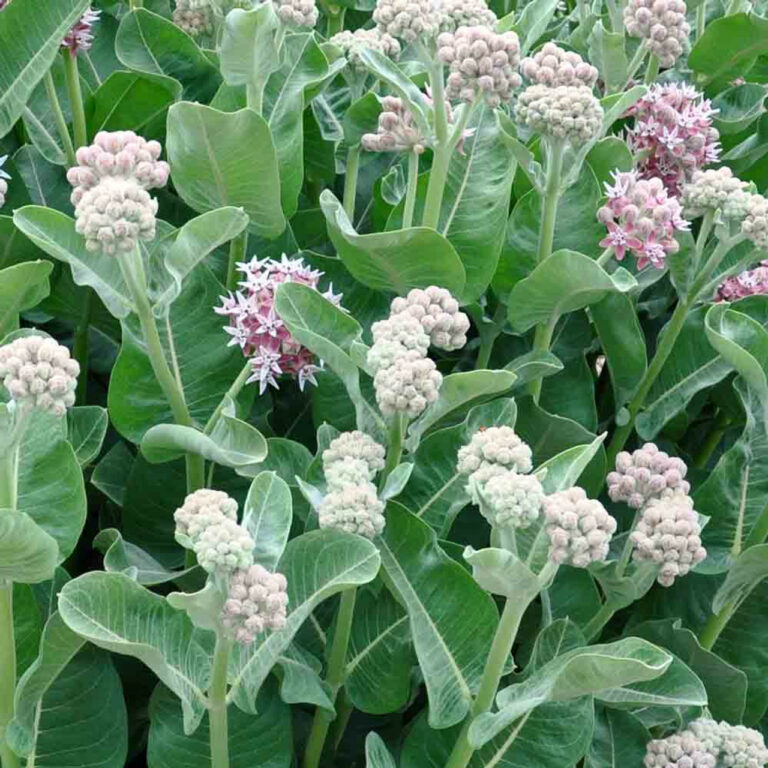Welcome to the world of Milkweed, a beloved native plant that captivates not only gardeners but also butterflies. Asclepias syriaca, commonly known as Common Milkweed, holds a special place in the hearts of these winged creatures as the sole host plant for their egg-laying endeavors.
Standing tall at a height of two to four feet, Common Milkweed exhibits a graceful upward growth habit. Its thick, oblong green leaves, stretching up to eight inches, add a touch of elegance to any landscape. For those eager to cultivate this beauty, it’s advisable to plant seedlings in early spring once the frost danger has subsided.
Nature rewards us with a visual spectacle when late spring to mid-summer arrives, and clusters of fragrant pink-purple flowers burst forth, gracing the surroundings. It’s important to note that while Milkweed’s leaves and the milky substance within are poisonous to most, they hold a special allure for our beloved monarch butterflies.
Care
Caring for Milkweed plants is not exactly the most difficult job on the world, but you better pay attention to these aspects:
- Water: When watering, make sure to deeply saturate the soil, providing the plants with one to two inches of water. Then, allow the top inch of soil to dry before watering again. Be cautious not to overwater, as this could lead to a detrimental fungus.
- Soil: this plant prefers well-drained, dry to medium average soil. It’s remarkably resilient, tolerating dry conditions, infertile soil, and even rocky terrain.
- Light: it thrives in full sunlight, so choose an open area that basks in six to eight hours of glorious sun each day.
- Temperature: As a true survivor, it can tolerate a wide range of both, but extreme and prolonged heat or humidity may not be its cup of nectar.
Propagation
Propagating Common Milkweed can be done through two common methods: taking cuttings and growing from seeds.
Cuttings offer a quick and efficient way to create new plants. During summer, take four-inch cuttings from green stems, remove lower leaves, coat the bottom with rooting hormone, and place in an 80/20 mix of perlite and peat moss. Keep them in a shady spot with moist soil until roots form, then transplant within six to ten weeks.
For seeds, scatter them in the ground in fall, or stratify indoors for 30 days before planting in peat pots and transplanting in spring.
Common Pests
- Spider Mites
- Milkweed Beetles
- Oleander Aphids
- Snails and Slugs
- Leaf Miners
Frequently Asked Questions
Common Milkweed has a formidable ability to propagate, not only through its seeds but also via its underground rhizomes. This resilient plant’s spread can present challenges when it comes to control and management.
Why is it called milkweed?
The name “milkweed” comes from the milky sap that is found within the plant’s stems and leaves. When the plant is damaged or cut, this sap is released, and it has a milky appearance.
Is milkweed poisonous to skin?
Yes, the milk from the plant can cause eye or skin irritation.
How to propagate Milkweed?
Propagating Common Milkweed can be done through two common methods: taking cuttings and growing from seeds.

